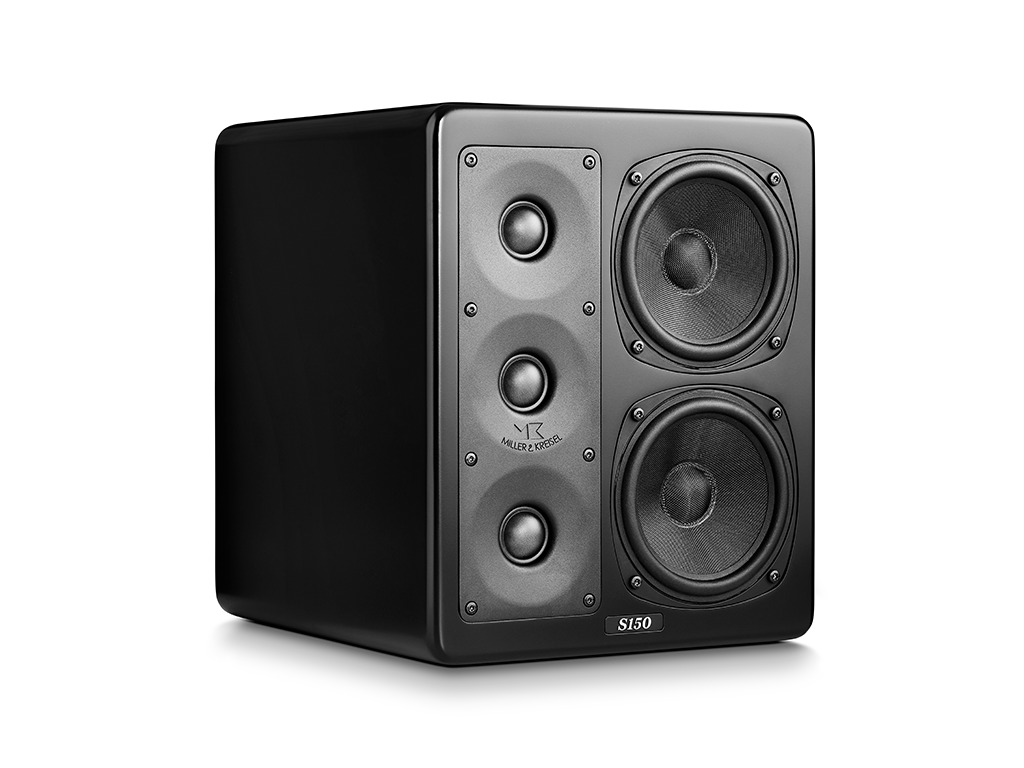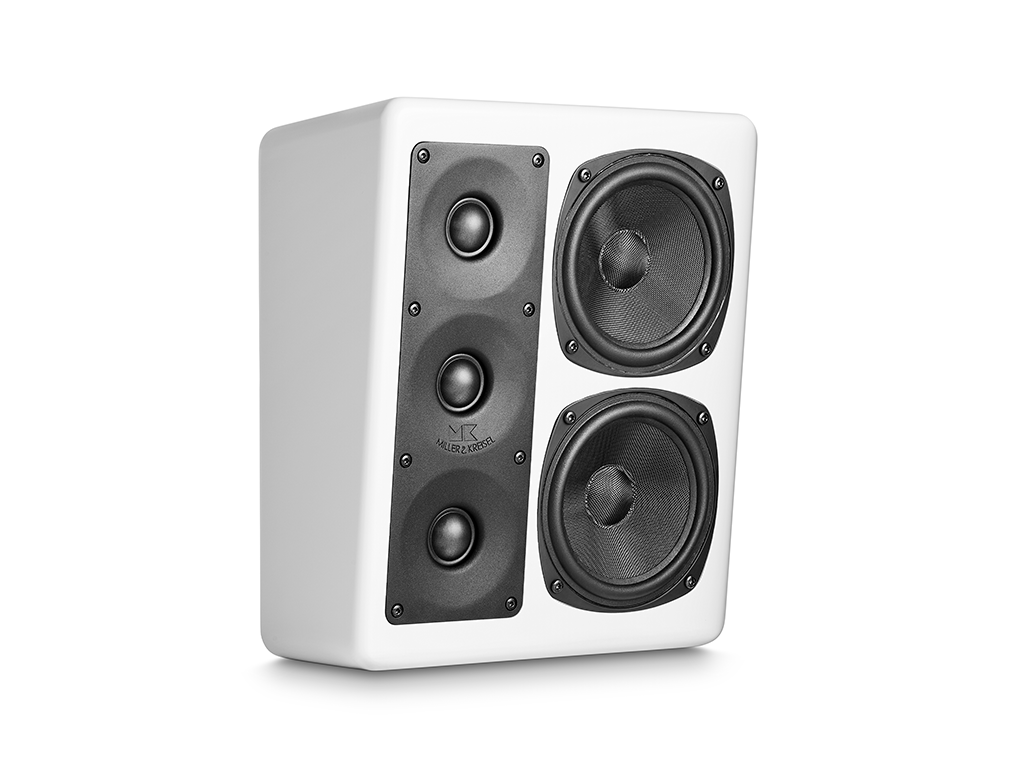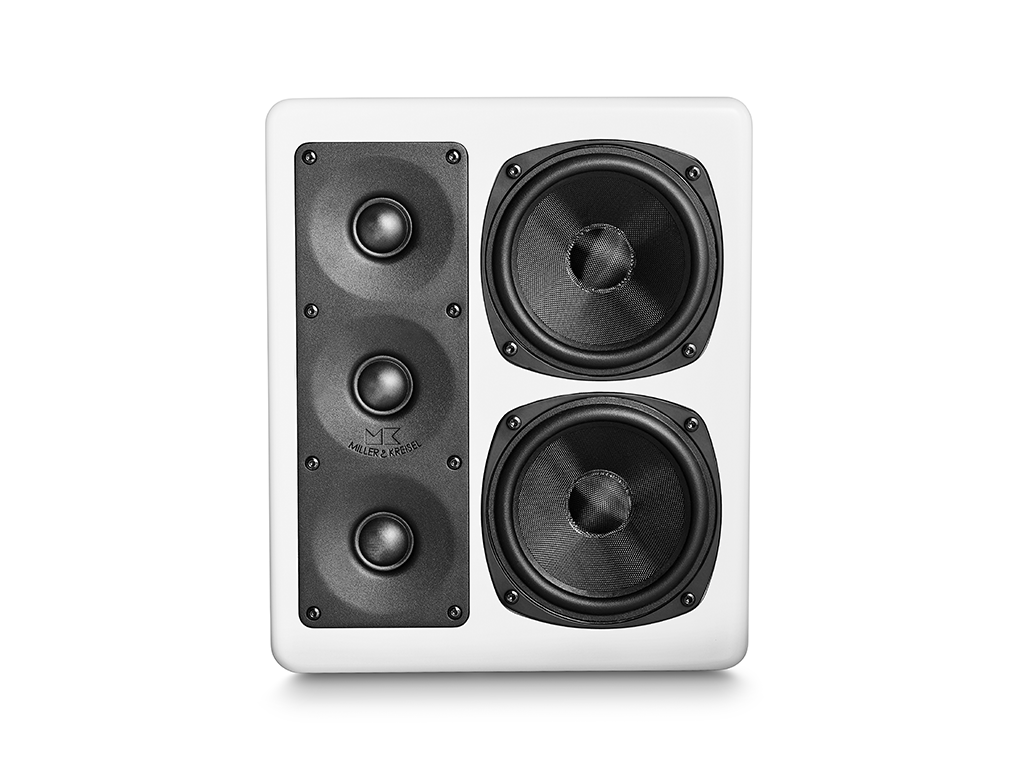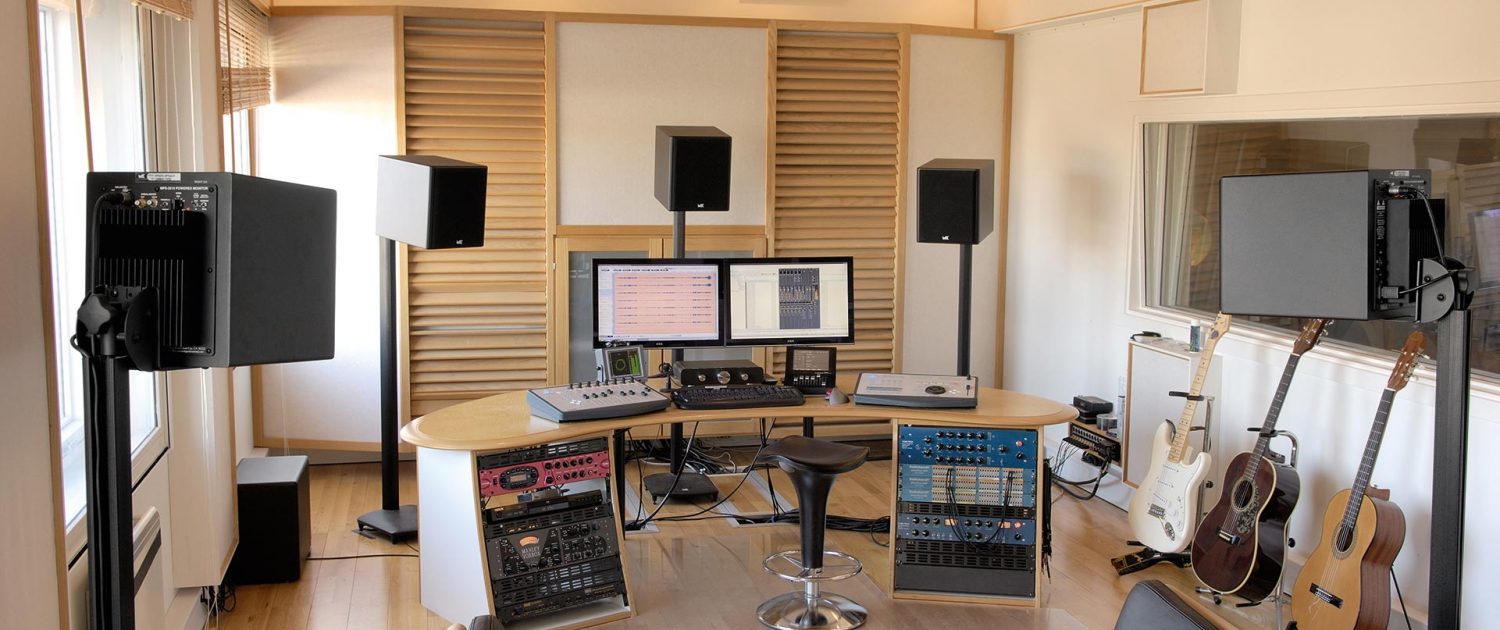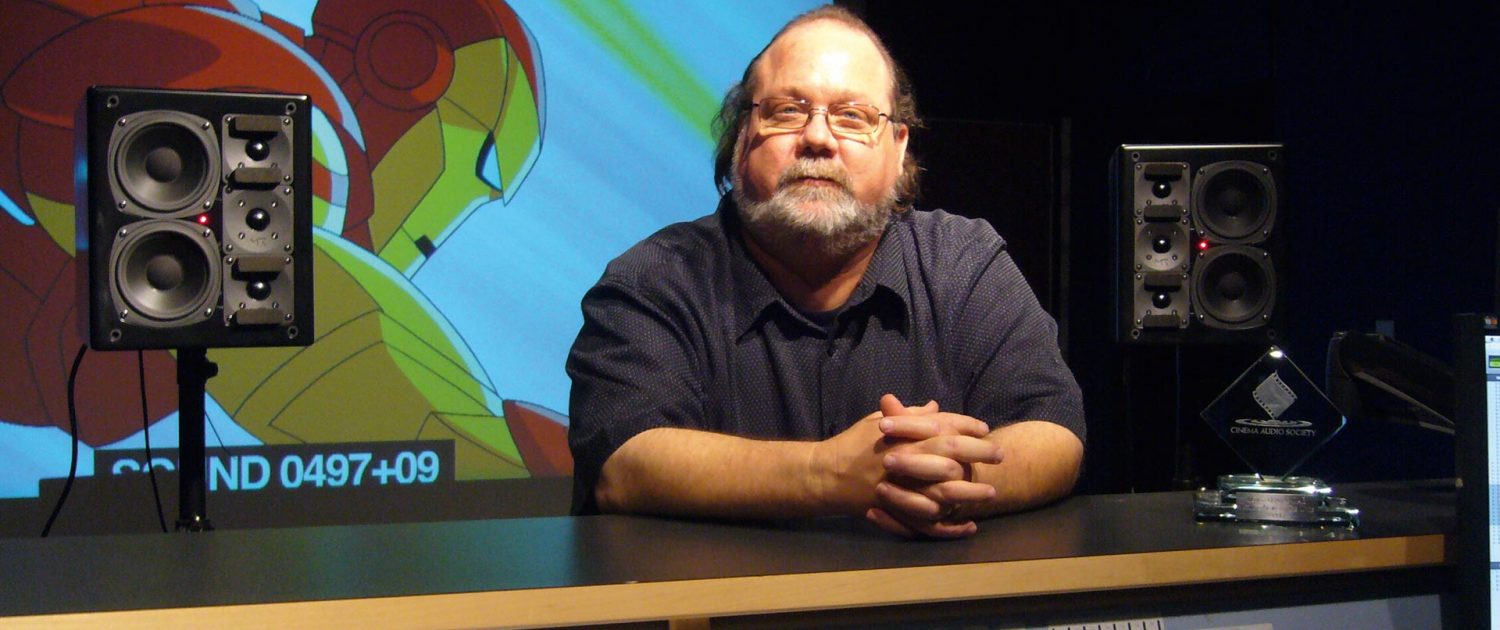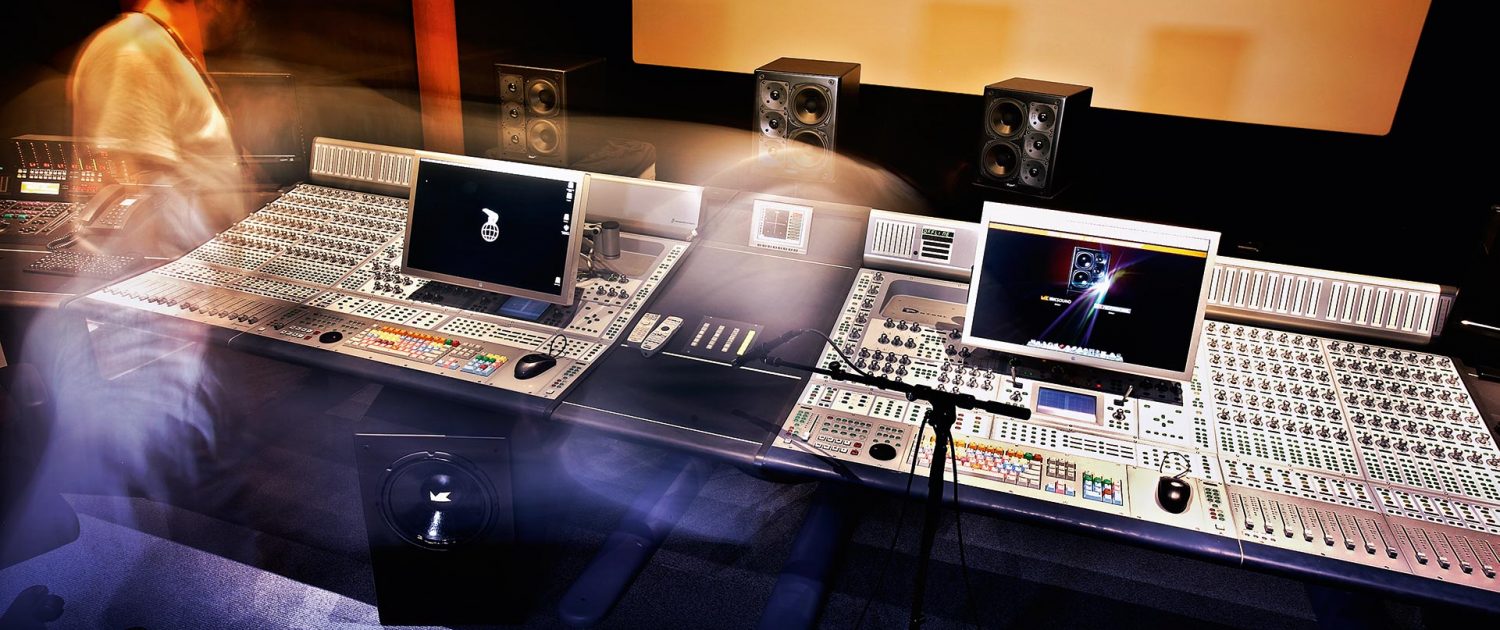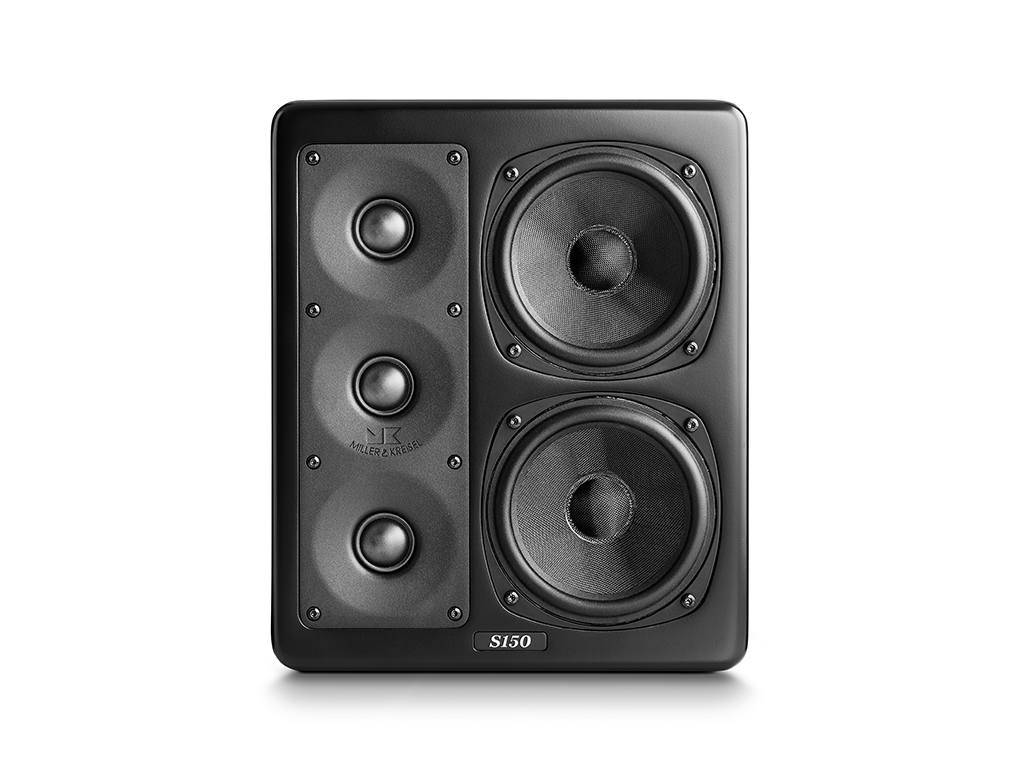The M&K Sound 150 configuration of triple stacked tweeters alongside dual woofers is a distinctly different and instantly recognizable layout that offers considerable performance and placement benefits.
This array offers wide horizontal dispersion with slightly narrower dispersion in the vertical plane, thereby minimizing reflected sound. Unlike conventional loudspeakers, where the direct sound is obscured by a dense smear of intrusive room reflections, M&K Sound 150 models allow the listener to experience much more of the original recorded space, with all the subtle room cues and ambient sounds that contribute to a credible you-are-there illusion.
Dual 5.25” bass/mid drivers provide an effective surface area almost 20% larger than a single
6” drive unit. By sharing the load between two separate motor systems and two cones, 150
monitors achieve improved heat dissipation, increased power handling and enhanced linearity at large excursion.
Because the mid/woofer sections’ contribution to the overall sound is generated entirely by the drivers operating well with their purely pistonic range, measured response exhibits ideal linear behavior, uncolored by cone break up or off-axis response deviations. Altogether, this means higher system efficiency and the capability to play louder without strain or break-up
In the groundbreaking 150 triple tweeter array, the top end is handled by a trio of specially
designed high frequency transducers driven together to operate effectively as a single, compact high frequency generator.
Because the stacked triple tweeters improve power handling by distributing energy among three individual drivers at the same time, the multielement configuration also makes possible a lower crossover point than is found in most conventional systems.
In traditional systems, restricted high frequency power handling demands the use of much higher crossover points than 2.5 KHz to reduce the load on the tweeter. Consequently, the crossover point occurs in the critical mid frequency range which must be reproduced by both a mid/woofer and a tweeter in combination, with undesirable side effects such as phase issues and timing problems that compromise the integrity of the midrange.
And, unfortunately, studies have shown that the critical 2.5 – 3 kHz midband range is the area in which human hearing is most sensitive to sonic deviations and aberrations.
Because we expanded our design mandate far beyond mere flat frequency response (although the 150 range remains flat to within +/-2 dB (average) across the full audio band at typical listening distances), the 150 driver configuration eliminates these issues entirely. Because three tweeters can handle more power than one, the crossover point can be substantially lower at 1.5 kHz, resulting in a smooth, undetectable transition between woofers and tweeters.
The clearly audible result in every M&K Sound monitor is optimal timing between high and low
frequencies and minimal acoustic phase shift (time delay) for accurate rendering of detail with
exceptional transient speed.
M&K Sound 150 systems present an almost purely resistive load to the power amplifier with a minimum impedance rated at 4 Ohm for fine results with any quality power amplifier.



